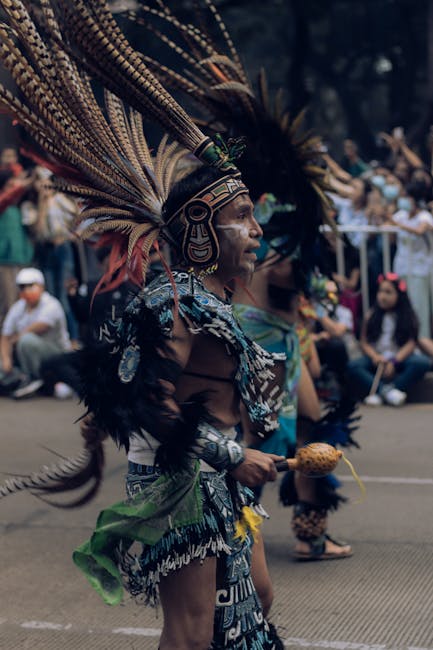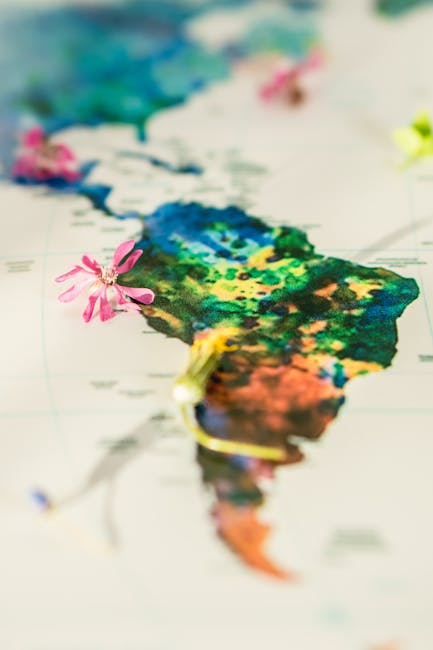Small Industry Day: Celebrating the Backbone of the Global Economy
Small and medium-sized enterprises (SMEs) are the lifeblood of economies worldwide. They generate jobs, drive innovation, and contribute significantly to economic growth. Recognizing their vital role, many countries celebrate Small Industry Day, a dedicated occasion to highlight the achievements of small businesses and encourage their further development.
This article delves into the significance of Small Industry Day, exploring its history, objectives, and the diverse ways it is celebrated globally. We will also examine the challenges faced by SMEs and discuss strategies for their continued success.
The Genesis of Small Industry Day: A Global Recognition
While the exact origins of Small Industry Day are difficult to pinpoint, its celebration has roots in various initiatives aimed at promoting and supporting small businesses.
- United Nations Industrial Development Organization (UNIDO): UNIDO, a specialized agency of the United Nations, has been actively involved in promoting industrial development, particularly for SMEs. Its programs and initiatives have contributed to the global recognition of the importance of small industries.
- International Labour Organization (ILO): The ILO, another UN agency, has played a crucial role in advocating for decent work and promoting entrepreneurship, particularly for micro, small, and medium-sized enterprises (MSMEs).
- World Bank: The World Bank has been a strong advocate for supporting SMEs, recognizing their potential for economic growth and poverty reduction. Its programs and initiatives have provided financial and technical assistance to SMEs in developing countries.
While there is no single, universally recognized Small Industry Day, many countries have established their own dedicated days to celebrate and support small businesses. These days often coincide with national holidays or significant economic events.
The Importance of Small Industry Day: A Multifaceted Impact
Small Industry Day serves as a platform to:
- Raise Awareness: It brings attention to the vital role of SMEs in the economy, highlighting their contributions to job creation, innovation, and economic growth.
- Promote Entrepreneurship: The day encourages individuals to consider starting their own businesses, fostering a culture of entrepreneurship and innovation.
- Recognize Achievements: It provides an opportunity to celebrate the successes of small businesses and acknowledge their contributions to their communities.
- Facilitate Networking: Small Industry Day events often bring together entrepreneurs, industry experts, and government officials, fostering collaboration and knowledge sharing.
- Showcase Opportunities: The day highlights available resources and support programs for SMEs, helping them access funding, training, and mentorship.
Celebrating Small Industry Day: Diverse Approaches Worldwide
The ways in which Small Industry Day is celebrated vary across countries, reflecting their unique economic contexts and priorities. Here are some examples:
India: India celebrates National Small Industry Day on August 29th, commemorating the birth anniversary of Dr. V. K. R. V. Rao, a renowned economist who played a pivotal role in shaping India’s industrial policy. The day is marked by various events, including awards ceremonies, exhibitions, and conferences.
United States: The National Small Business Week is celebrated annually in the United States, typically in the first week of May. This week-long event features various activities, including workshops, seminars, and networking events, aimed at supporting small businesses.
United Kingdom: The Small Business Saturday is celebrated annually in the United Kingdom, typically in the first Saturday of December. This day encourages shoppers to support local businesses, promoting community engagement and economic growth.
China: China celebrates Small and Medium-Sized Enterprises Day on May 10th, focusing on promoting the development of SMEs and fostering a favorable business environment. The day is marked by various events, including awards ceremonies, exhibitions, and policy announcements.
Table 1: Small Industry Day Celebrations Around the World
| Country | Day of Celebration | Focus | Key Activities |
|---|---|---|---|
| India | August 29th | National Small Industry Day | Awards ceremonies, exhibitions, conferences |
| United States | First week of May | National Small Business Week | Workshops, seminars, networking events |
| United Kingdom | First Saturday of December | Small Business Saturday | Encouraging shoppers to support local businesses |
| China | May 10th | Small and Medium-Sized Enterprises Day | Awards ceremonies, exhibitions, policy announcements |
Challenges Faced by Small Industries: Navigating the Complex Landscape
Despite their vital role, small industries face numerous challenges in today’s dynamic and competitive global landscape. These challenges include:
- Access to Finance: SMEs often struggle to secure adequate funding, particularly in developing countries. Limited access to credit and equity financing can hinder their growth and expansion.
- Competition: SMEs face intense competition from larger companies with greater resources and market reach. This can make it difficult for them to gain market share and achieve profitability.
- Lack of Skilled Labor: Finding and retaining skilled workers can be a challenge for SMEs, particularly in sectors with high demand for specialized skills.
- Technological Advancements: Rapid technological advancements can create a gap between SMEs and larger companies with greater resources to invest in new technologies.
- Regulatory Burden: Complex regulations and bureaucratic procedures can create significant hurdles for SMEs, adding to their operating costs and administrative burden.
- Market Access: SMEs often face difficulties in accessing new markets, particularly in international trade. This can limit their growth potential and restrict their ability to compete on a global scale.
Strategies for Success: Empowering Small Industries for Sustainable Growth
Addressing the challenges faced by SMEs requires a multi-pronged approach involving government policies, private sector initiatives, and international cooperation. Here are some key strategies for empowering small industries and fostering their sustainable growth:
- Improving Access to Finance: Governments can implement policies to encourage lending to SMEs, such as loan guarantees, tax incentives, and microfinance programs. Private sector initiatives, such as crowdfunding platforms and business angel networks, can also play a crucial role in providing alternative sources of funding.
- Promoting Innovation and Technology Adoption: Governments can support SME innovation through research grants, technology transfer programs, and incubators. Private sector initiatives, such as technology accelerators and mentorship programs, can help SMEs adopt new technologies and improve their competitiveness.
- Developing Skilled Workforce: Governments can invest in vocational training programs and apprenticeships to equip workers with the skills needed by SMEs. Private sector initiatives, such as industry-led training programs and partnerships with educational institutions, can also contribute to workforce development.
- Simplifying Regulations and Reducing Bureaucracy: Governments can streamline regulatory processes, reduce administrative burdens, and provide clear and accessible information to SMEs. This can help them focus on their core business activities and reduce their operating costs.
- Facilitating Market Access: Governments can promote international trade by negotiating trade agreements, providing export financing, and offering trade promotion services. Private sector initiatives, such as trade missions and business networking events, can also help SMEs connect with potential buyers and partners.
- Strengthening Business Support Networks: Governments can establish business support networks, such as business incubators, accelerators, and mentorship programs, to provide SMEs with access to resources, guidance, and networking opportunities. Private sector initiatives, such as industry associations and chambers of commerce, can also play a vital role in supporting SMEs.
The Future of Small Industry Day: A Catalyst for Sustainable Development
Small Industry Day is not just a symbolic celebration; it serves as a catalyst for promoting sustainable economic development. By recognizing the contributions of SMEs, fostering entrepreneurship, and addressing their challenges, we can create a more inclusive and prosperous future for all.
The future of Small Industry Day lies in its ability to:
- Promote Inclusive Growth: By supporting SMEs, particularly in developing countries, we can create more equitable and sustainable economic growth, reducing poverty and inequality.
- Drive Innovation and Technological Advancement: By encouraging SMEs to embrace innovation and adopt new technologies, we can foster a more dynamic and competitive global economy.
- Strengthen Local Communities: By supporting local businesses, we can create stronger and more resilient communities, fostering economic growth and social cohesion.
Small Industry Day is a reminder of the vital role that small businesses play in our economies and societies. By celebrating their achievements, addressing their challenges, and fostering their growth, we can create a more prosperous and sustainable future for all.
Frequently Asked Questions about Small Industry Day
1. What is Small Industry Day?
Small Industry Day is a dedicated occasion to celebrate the achievements of small businesses and encourage their further development. It recognizes the vital role of small and medium-sized enterprises (SMEs) in driving economic growth, creating jobs, and fostering innovation. While there is no single, universally recognized Small Industry Day, many countries have established their own dedicated days to celebrate and support small businesses.
2. Why is Small Industry Day important?
Small Industry Day is important because it:
- Raises awareness: It brings attention to the vital role of SMEs in the economy, highlighting their contributions to job creation, innovation, and economic growth.
- Promotes entrepreneurship: The day encourages individuals to consider starting their own businesses, fostering a culture of entrepreneurship and innovation.
- Recognizes achievements: It provides an opportunity to celebrate the successes of small businesses and acknowledge their contributions to their communities.
- Facilitates networking: Small Industry Day events often bring together entrepreneurs, industry experts, and government officials, fostering collaboration and knowledge sharing.
- Showcases opportunities: The day highlights available resources and support programs for SMEs, helping them access funding, training, and mentorship.
3. How is Small Industry Day celebrated?
The ways in which Small Industry Day is celebrated vary across countries, reflecting their unique economic contexts and priorities. Some common activities include:
- Awards ceremonies: Recognizing outstanding SMEs for their contributions to the economy and their communities.
- Exhibitions: Showcasing products and services offered by SMEs, providing a platform for them to connect with potential customers and partners.
- Conferences: Bringing together industry experts, policymakers, and entrepreneurs to discuss challenges and opportunities facing SMEs.
- Workshops and seminars: Providing training and guidance to SMEs on topics such as business management, marketing, and finance.
- Networking events: Facilitating connections between SMEs, investors, and other stakeholders.
4. What are some of the challenges faced by small industries?
Small industries face numerous challenges, including:
- Access to finance: SMEs often struggle to secure adequate funding, particularly in developing countries.
- Competition: SMEs face intense competition from larger companies with greater resources and market reach.
- Lack of skilled labor: Finding and retaining skilled workers can be a challenge for SMEs, particularly in sectors with high demand for specialized skills.
- Technological advancements: Rapid technological advancements can create a gap between SMEs and larger companies with greater resources to invest in new technologies.
- Regulatory burden: Complex regulations and bureaucratic procedures can create significant hurdles for SMEs, adding to their operating costs and administrative burden.
- Market access: SMEs often face difficulties in accessing new markets, particularly in international trade.
5. What can be done to support small industries?
Addressing the challenges faced by SMEs requires a multi-pronged approach involving government policies, private sector initiatives, and international cooperation. Some key strategies include:
- Improving access to finance: Governments can implement policies to encourage lending to SMEs, such as loan guarantees, tax incentives, and microfinance programs.
- Promoting innovation and technology adoption: Governments can support SME innovation through research grants, technology transfer programs, and incubators.
- Developing skilled workforce: Governments can invest in vocational training programs and apprenticeships to equip workers with the skills needed by SMEs.
- Simplifying regulations and reducing bureaucracy: Governments can streamline regulatory processes, reduce administrative burdens, and provide clear and accessible information to SMEs.
- Facilitating market access: Governments can promote international trade by negotiating trade agreements, providing export financing, and offering trade promotion services.
- Strengthening business support networks: Governments can establish business support networks, such as business incubators, accelerators, and mentorship programs, to provide SMEs with access to resources, guidance, and networking opportunities.
6. How can I get involved in Small Industry Day?
You can get involved in Small Industry Day by:
- Supporting local businesses: Shop at local businesses, recommend them to friends and family, and leave positive reviews online.
- Attending events: Participate in Small Industry Day events, such as workshops, seminars, and networking events.
- Volunteering: Offer your skills and expertise to help small businesses, such as providing mentorship, marketing assistance, or financial advice.
- Advocating for SMEs: Raise awareness about the importance of small businesses and advocate for policies that support their growth.
By celebrating Small Industry Day and supporting small businesses, we can contribute to a more inclusive and prosperous future for all.
Here are some multiple-choice questions (MCQs) about Small Industry Day, each with four options:
1. What is the primary purpose of Small Industry Day?
a) To celebrate the achievements of large corporations.
b) To promote the development of small and medium-sized enterprises (SMEs).
c) To raise awareness about environmental issues.
d) To encourage investment in the stock market.
2. Which of the following is NOT a common activity associated with Small Industry Day celebrations?
a) Awards ceremonies recognizing outstanding SMEs.
b) Exhibitions showcasing products and services offered by SMEs.
c) Conferences discussing challenges and opportunities facing SMEs.
d) Public protests against government policies affecting SMEs.
3. Which of the following is a major challenge faced by small industries?
a) Lack of access to affordable housing.
b) Limited access to funding and financing.
c) Difficulty in finding qualified employees.
d) All of the above.
4. What is one way governments can support small industries?
a) Increasing taxes on SMEs to generate more revenue.
b) Providing subsidies and loan guarantees to help SMEs access funding.
c) Restricting competition from larger companies.
d) Encouraging SMEs to relocate to rural areas.
5. Which of the following is a benefit of supporting small industries?
a) Increased unemployment rates.
b) Reduced economic growth.
c) Creation of jobs and economic opportunities.
d) Increased dependence on foreign investment.
Answers:
- b) To promote the development of small and medium-sized enterprises (SMEs).
- d) Public protests against government policies affecting SMEs.
- d) All of the above.
- b) Providing subsidies and loan guarantees to help SMEs access funding.
- c) Creation of jobs and economic opportunities.









